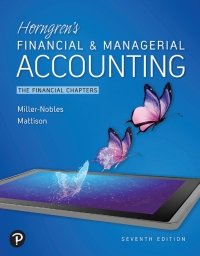A number of terms and concepts from this chapter and a list of descriptions, definitions, and explanations follow. For each term (1-12) listed below, choose at least one corresponding item (-p) below. Note that a single term may have more than one description and a single description may be used more than once or not at all. (a) short-term management decision made using differential analysis. (b) Management decision in which lost revenue is compared to the reduction of costs to determine the overall effect on profit. (c) Exists when a company has not yet reached the limit on its resources. (d) Costs that have already been incurred. (a) Management decision in which fixed manufacturing overhead is ignored as long as there is enough excess capacity to meet the order. (f) Costs that can be avoided by choosing one option over another. (9) step 5 of the management decision-making process. (h) Management decision in which relevant costs of making a product internally are compared to the cost of purchasing that product. (i) Costs that are relevant to short-term decision making. (3) Resource that is insufficient to meet the demands placed on it. (k)First step of the management decision-making process. (1) Costs that are always irrelevant to management decisions. (m) Exists when a company has met its limit on one or more resources. (n) Benefits given up when one alternative is chosen over another. (o) Costs that change across decision alternatives. (P)Step 3 of the management decision-making process. 1. Excess capacity. 2. Identify the decision problem. 3. Bottleneck. 4. Special-order decision 5. Differential costs. 6 Evaluate the costs and benefits of alternatives. 7 Make-or-buy decision 8. Sunk costs 9 Opportunity costs ME WAROLA 18 chosen over and (o) Costs that change across decision alternatives. (p) Step 3 of the management decision-making process. 1. Excess capacity. 2. Identify the decision problem. 3. Bottleneck. Special-order decision. 5. Differential costs. 6. Evaluate the costs and benefits of alternatives. 7. Make-or-buy decision. 8. Sunk costs. 9. Opportunity costs. 10. Keep-or-drop decision. 11. Full capacity. 12. Avoidable costs








